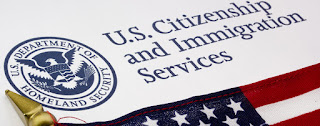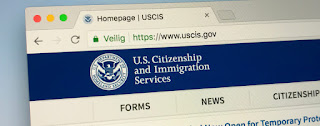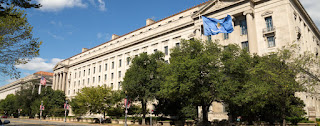Note: This is an archived article on the Department of State's (DOS's) old 30/60 day rule. On September 1, 2017, the DOS replaced the 30/60 day rule with a similar but more stringent “90 day rule.” Please see our full article to learn about the new 90 day rule [
see article].
Introduction: The 30/60 Day Rule
In order to obtain a nonimmigrant visa at a U.S. consulate, an applicant must satisfy consular officers that he or she is eligible for the status being sought. If an alien obtains an immigration benefit through “fraud or willful misrepresentation of a material fact,” he or she will be inadmissible under section 212(a)(6)(C)(i) of the Immigration and Nationality Act (INA).
This brings the question of when an alien can be found to have misrepresented his or her intentions when obtaining a nonimmigrant visa based upon conduct after entry with the visa. To help guide consular officers, the Department of State (DOS) adopted through the Foreign Affairs Manual a “30/60 Rule.” In short, consular officers will apply high scrutiny to aliens who violate nonimmigrant status in certain ways within 30 days of entry, or between 31 and 60 days of entry. However, it is important to note that the 30/60 day rule is not a binding “rule” that is grounded in statutes or regulations, but rather it is an adjudicative guide for consular officers that is also acknowledged in the United States Citizenship and Immigration Services (USCIS) Policy Manual. Nevertheless, USCIS adjudicators are not in any way bound by the 30/60 day rule.
In this article, we will examine the 30/60 day rule, how it is used by adjudicators, and administrative and judicial precedents regarding aliens who violate their nonimmigrant statuses within 60 days of entry into the United States.
Statutory and Regulatory Background for the 30/60 Day Rule
The 30/60 day rule exists in the FAM, which is simply a guide for consular officers in adjudicating immigration issues. The 30/60 day rule in and of itself is an adjudicative principle, and it is not actually instantiated in statutes or regulations. Rather, we must understand the 30/60 day rule as a tool to interpret the statutes and regulations.
Inadmissibility for Fraud or Misrepresentation of a Material Fact
The 30/60 day rule is meant to help consular officers determine whether an alien's conduct after admission as a nonimmigrant demonstrates that he or she obtained her nonimmigrant status through “fraud or willful misrepresentation of a material fact” to consular officers. Fraud or misrepresentation is a serious inadmissibility ground found in section 212(a)(6)(C)(i) of the INA. In short, it renders any alien who obtains an immigration benefit (which includes nonimmigrant status) through fraud or misrepresentation of a material fact to be inadmissible for life. To learn about inadmissibility for fraud or misrepresentation of a material fact and the limited waivers available under section 214(i) of the INA, please read our full article [
see article].
The DOS has regulations describing fraud or misrepresentation in 22 C.F.R. 40.63(a). Specifically, the regulations state:
An alien who seeks to procure, or has sought to procure, or has procured a visa, other documentation, or entry into the United States or other benefit provided under the INA by fraud or by willfully misrepresenting a material fact at any time shall be ineligible under INA 212(a)(6)(C)… [1]
The 30/60 day rule in the FAM is designed to help consular officers implement this regulation.
Nonimmigrant Intent
The 60/90 day rule is generally used to determine whether an alien who was required to demonstrate “nonimmigrant intent” in order to obtain a visa did not in fact have the nonimmigrant intent that he or she represented to consular officers.
The requirement that nonimmigrant visa applicants have nonimmigrant intent is found in section 214(b) of the INA. With limited exceptions, all nonimmigrant visa applicants are presumed to have “immigrant intent,” and must satisfy consular officers that they in fact have nonimmigrant intent. Applicants under the following categories are exempt from the presumption of immigrant intent in section 214(b):
Additionally, K visa applicants are presumed to have immigrant intent as they are required to file for adjustment of status shortly after entry on K status.
The following categories are generally permitted to have “dual-intent”:
- E
- O1
- P (but not P visa support personnel)
Nonimmigrants demonstrated nonimmigrant intent, and subsequently took actions within 30/60 days of entry that betray immigrant intent, will have their cases subject to high scrutiny from consular officers.
The 30/60 Day Rule in the FAM
The 30/60 day rule is found in 9 FAM 302.9-4(B)(3)(g)(1).[2]
In subsection (a), the FAM states that “[i]n determining whether a misrepresentation has been made, some of the most difficult questions arise from cases involving aliens in the United States who conduct themselves in a manner inconsistent with representations they made to the consular officers concerning their intentions at the time of visa application or to immigration officers when applying for admission.”
The FAM notes that cases occur most frequently when a nonimmigrant, subsequent to obtaining a nonimmigrant visa or status, either:
- i. [Applies] for adjustment of status to permanent resident; or
- ii. [Fails] to maintain … nonimmigrant status (for example, by engaging in employment without authorization by DHS)
Subsection (b) states that the 30/60 day rule was created to “facilitate adjudication of these types of cases.”
Subsection (c) notes that aliens who apply for adjustment of status or change of nomimmigrant status “are within the jurisdiction of USCIS.” Accordingly, if a consular officer becomes aware of information that an alien applies for adjustment of status or change of status within either 30 days or between 31 and 60 days of entry after the alien represented to the consular officer that he or she had no immigrant intent, the consular officer is instructed to bring the information to the attention of USCIS.
Subsection (d) states that when nonimmigrant visa holders fail to maintain status, that in and of itself does not prove that the aliens intentions where other than as he or she stated at the time of entry. In order to determine that a willful misrepresentation was made, the existence of a misrepresentation must be “clearly and factually established by direct or circumstantial evidence sufficient to meet the 'reason to believe' standard.”
Furthermore, it is important to note that 9 FAM 302.9(B)(3)(a) defines “misrepresentation” as “an assertion or manifestation not in accordance with the facts.” 9 FAM 302.9(B)(3)(b) clearly distinguishes the misrepresentation of information and “information that was merely concealed by the alien's silence.” It further notes that “[s]ilence or the failure to volunteer information does not in itself constitute a 'misrepresentation' for the purposes of INA 212(a)(6)(C)(i).
30/60 Day Rule With Regard to B Visas
The 30/60 day rule is primarily designed to help DOS officers adjudicate concerns regarding B visas or persons who entered the United States under the Visa Waiver Program (VWP). Immigration officers in general are vigilant about preventing visitors visas and status from being used to circumvent the immigration laws to seek adjustment of status or change of status.
9 FAM 302.9-4(B)(3)(g)(2) instructs consular officers to apply the 30/60 day rule to persons who obtain B2 status by informing an officer (either at the consular office or at a Port of Entry) that the purpose of his or her visit is consistent with B status, and then subsequent to entry, and within 30 days or 31 to 60 days, violates such status in one of the following ways:
- a. Actively [seeks] unauthorized employment and, subsequently, becomes engaged in such employment;
- b. [Enrolls] in a full course of study without the benefit of the appropriate change of status;
- c. [Marries] and takes up permanent residence; or
- d. [Undertakes] any other activity for which a change of status or an adjustment of status would be required, without the benefit of a change or adjustment.
Violation Within 30 Days of Entry
Part (3) states that if such a violation occurs within 30 days of entry, a consular officer “may presume that the applicant misrepresented his or her intention in seeking a visa or entry.” The consular officer must request an advisory opinion before making a formal determination.
Violation After 30 Days But Within 60 Days
Part (4) states that if such a violation occurs after 30 days, but within 60 days of entry, there is no presumption of willful misrepresentation at the time of entry. However, if the facts indicate that the alien did willfully misrepresent her intentions at the time of entry, the consular officer must give the alien the opportunity to “present countervailing evidence.” The consular officer must request an advisory opinion before making a formal determination.
Violation After 60 Days
The DOS does not consider violations that occur after 60 days to be a basis for a finding of inadmissibility for willful misrepresentation.
General Guidance
9 FAM 302.9-4(B)(3)(h)(2) places the burden upon the alien who was found to have violated his or her status within 30 days of entry “to establish that his or her true intent at the time of the suspected misrepresentation was permissible in [his or her] nonimmigrant status.” The alien must be provided with the opportunity to submit evidence to rebut the presumption of misrepresentation. If the consular officer determines that the alien failed to rebut the presumption, he or she must request an advisory option before making a formal determination.
USCIS's Limited Recognition of the 30/60 Day Rule
USCIS recognizes the 30/60 Day Rule in Ch. 3, Part J, of Volume 8 of the USCIS Policy Manual (PM). However, the PM reminds USCIS officers that the 30/60 day rule is not a binding rule, but “simply an analytical tool that may be helpful in resolving a particular case.” Accordingly, the PM states that the 30/60 day rule cannot be used in denying an immigration benefit or making a finding of inadmissibility.
Because USCIS adjudicates adjustment of status applications, as was noted in the FAM as well, it is important to remember that the 30/60 day rule cannot be the basis for denying an adjustment of status application. Conversely, while consular officers cannot consider a violation of status beyond 60 days to be the basis of an inadmissibility finding under section 212(a)(6)(C)(i), USCIS officers are under no such constraints, and may find an alien inadmissible for misrepresenting his or her intentions at the time of entry based on violations that happen beyond 60 days.
Please follow
this link (see footnote 17) to read our brief description of an Administrative Appeals Office (AAO) decision that cited the 30/60 day rule, but found that a woman who had violated her B2 visitor status within 30 days of entry rebutted the presumption of misrepresentation at the time of entry.
Administrative Decisions Regarding AOS for Family-Sponsored AOS
In the Matter of Cavazos, 17 I&N Dec. 215 (BIA 1980) [
PDF version], the BIA held that “preconceived intent” is not by itself a sufficient reason to deny adjustment of status in the immediate relative category. However, the BIA followed that decision up with the Matter of Ibrahim, 18 I&N Dec. 55 (BIA 1981) [
PDF version], where it declined to extend the principle established in the Matter of Cavazos to non-immediate relative family-based petitions.
Conclusion
It is important to understand that the 30/60 day rule is not a “rule” so much as it is a principle to help consular officers determine if a status violation indicates a “misrepresentation” in the initial visa application. DOS will mainly use the rule to determine whether someone applying for a visa rendered him or herself inadmissible by misrepresenting facts in obtaining a previous nonimmigrant visa (or status). USCIS is not bound by the 30/60 day rule in any way, and may not base a decision upon it. Furthermore, USCIS may find that an alien obtained a nonimmigrant visa through misrepresentation for actions that occurred more than 60 days after obtaining the visa.
If a nonimmigrant is unsure about an activity that he or she may undertake while on a nonimmigrant status, or has a desire to apply for adjustment of status, he or she should consult with an experienced immigration attorney. Each situation is unique, and an experienced immigration attorney will be able to evaluate the facts of a specific situation and provide sound counsel to the nonimmigrant.
Please read our articles on permissible activities in B1 status [
see article] and B2 status [
see article] for more information on those categories in particular.
Please visit the
nyc immigration lawyers website for further information. The Law Offices of Grinberg & Segal, PLLC focuses vast segment of its practice on immigration law. This steadfast dedication has resulted in thousands of immigrants throughout the United States.
- The regulation contains limited exceptions for aliens who were “bona fide” refugees at the time of seeking entry.
- In the previous version of the FAM, it was found in (9 FAM 40.63 N4.7 CT:VISA 22-55; 02-18-2015). We have the conversion tables from the old FAM to the new FAM here.















